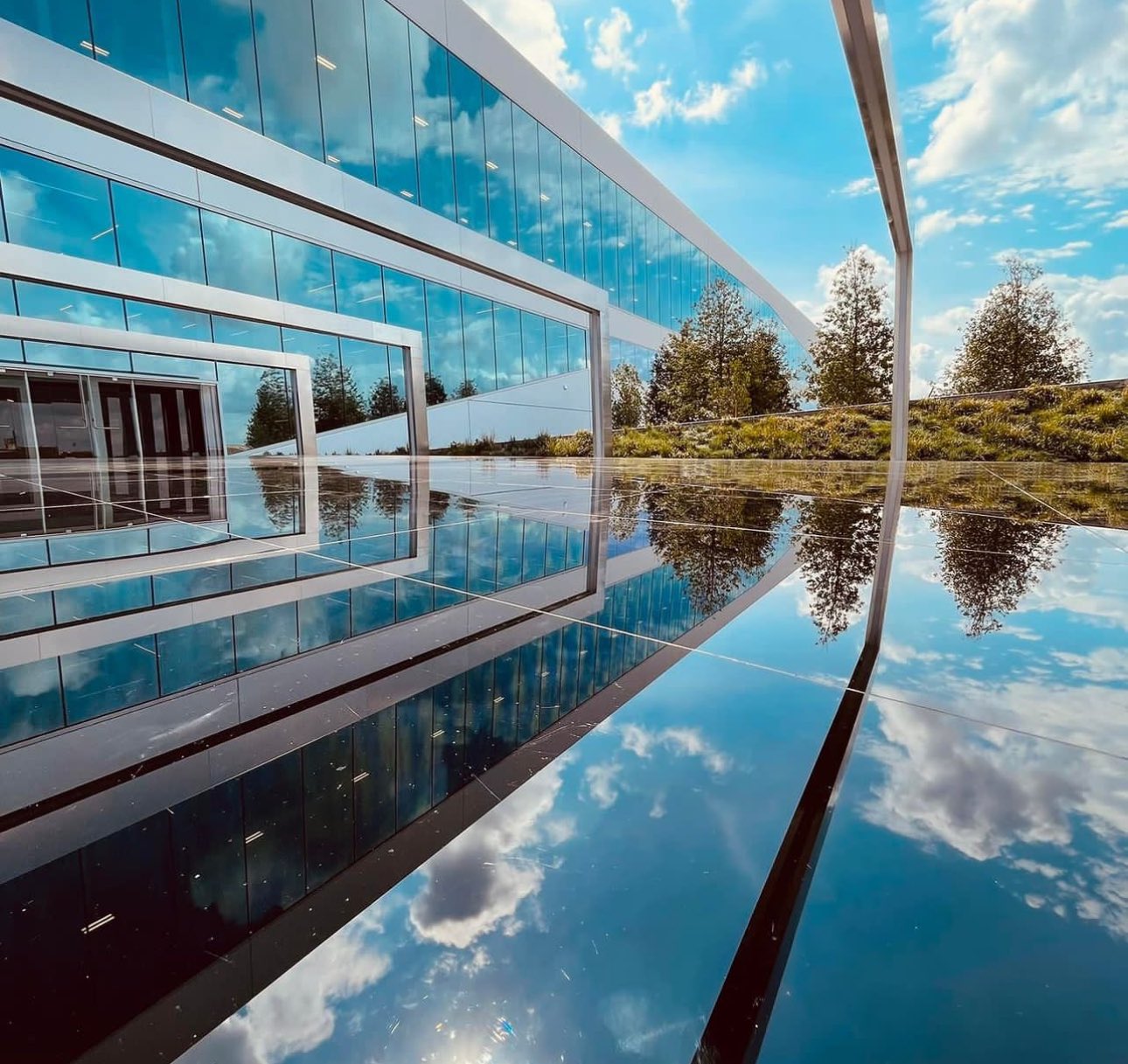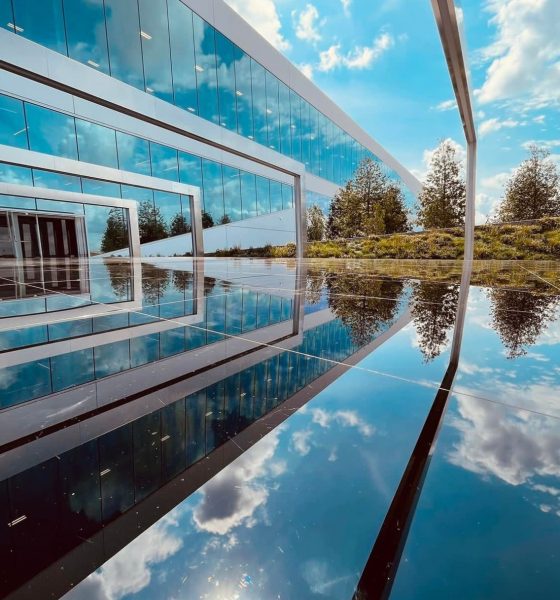Tesla has been approved to invest $750,000 in nine local organizations in Texas this year, significantly exceeding its required investments. Although the company is required to give a certain percentage of its taxes as community investments, the figure nearly doubles the required amount from last year, and one official went on to call the automaker’s contributions “really impressive.”
Travis County commissioners approved Tesla for $750,000 in investments to local organizations in 2023, as shared by the automaker in a report this week (via Fox 7 Austin). Tesla is required to invest about 10 percent of operations and maintenance property taxes into organizations near its Gigafactory in Austin, Texas, and in its official headquarters of Del Valle.
When Tesla established its headquarters in Del Valle, which officially opened in 2022 after being announced in 2020, part of the agreement included giving back to the community. Travis County Director of Economic Development Christy Moffett recently explained the agreement upon the commission’s approval of Tesla’s 2023 investment plan.
“Tesla has an obligation to spend an equivalent of at least 10 percent of the operations and maintenance ad valorem property tax owed by the company over the term of the agreement in one or more of the programs identified,” Moffett said.
Tesla’s maintenance and operational taxes amounted to a little more than $2.9 million in 2022, according to Fox 7 Austin, so the 10-percent requirement would equate to $298,000. The $750,000 Tesla has been approved for is more than double the 2022 figure.
“To see what has happened there because of the hard work of a lot of people, it’s really cool to see that,” said Rohan Patel, Tesla’s director of public policy.
The investments are broken up into increments ranging from as little as $12,000 to over $350,000, and will go toward organizations such as Del Valle school needs, along with multiple social and environmental groups.
“These things demonstrate to youth that there is something on the other side if [they] stay in school,” Travis County Precinct 1 Commissioner Jeff Travillion said.
The nine organizations are as follows, according to Tesla’s report to the county:
| Community Partner
|
Funding Amount
|
Program Description
|
| Ecorise
|
$100,000
|
Student Innovation Fund creating access to career pathways.
|
| American Youthworks
|
$30,000
|
New training and production equipment for Manufacturing Program, providing workforce training.
|
| Colorado River Alliance
|
$25,000
|
River clean-up and environmental education activities.
|
| Black Leaders’ Collective
|
$32,000
|
State of Black Education Program to improve career opportunities.
|
| Austin Area Urban League
|
$75,000
|
Green Jobs Initiative improving training and access to careers in the sustainability sector.
|
| Partners for Education Agriculture and Sustainability (PEAS)
|
$100,000
|
Sustainability/ Environmental programming to six elementary schools (AISD and Manor ISD) and prepare programming for the 4 Del Valle elementary schools.
|
| Workforce Solutions Teacher Externships
|
$12,000
|
2023 Summer Educator Externship Program. Tesla led training and teaching opportunities at Giga Texas.
|
| Del Valle ISD Staff
|
$376,880
|
Creation of 3 new DVISD roles to directly support career opportunities.
|
| Del Valle High School P-Tech Equipment
|
TBD
|
Manufacturing and Robotics equipment for classroom training.
|
Among the many programs are the addition of new roles at the Del Valle School District to support career development, and multiple education and training opportunities for students and teachers. The automaker is also expanding a 120-acre area to the west of Giga Texas as a pilot program for ecological restoration.
“The whole goal with this pilot project, which is a fairly large pilot project, is to get a lot of learnings about what works on this site and maybe what doesn’t and continue applying this along our river frontage,” said Logan Grant, Tesla factory engineer.
The news comes ahead of Tesla’s third-quarter earnings report on Wednesday evening at 5:30 pm ET.
“This is really impressive. I know there’s lots of chatter in the community about Musk and Tesla and all of that, but what you’ve created here is really remarkable,” said Brigid Shea, Travis County Precinct 2 Commissioner.
Tesla partners with Del Valle ISD on student training program for Giga Texas
What are your thoughts? Let me know at zach@teslarati.com, find me on X at @zacharyvisconti, or send your tips to us at tips@teslarati.com.

Elon Musk
Starlink passes 9 million active customers just weeks after hitting 8 million
The milestone highlights the accelerating growth of Starlink, which has now been adding over 20,000 new users per day.

SpaceX’s Starlink satellite internet service has continued its rapid global expansion, surpassing 9 million active customers just weeks after crossing the 8 million mark.
The milestone highlights the accelerating growth of Starlink, which has now been adding over 20,000 new users per day.
9 million customers
In a post on X, SpaceX stated that Starlink now serves over 9 million active users across 155 countries, territories, and markets. The company reached 8 million customers in early November, meaning it added roughly 1 million subscribers in under seven weeks, or about 21,275 new users on average per day.
“Starlink is connecting more than 9M active customers with high-speed internet across 155 countries, territories, and many other markets,” Starlink wrote in a post on its official X account. SpaceX President Gwynne Shotwell also celebrated the milestone on X. “A huge thank you to all of our customers and congrats to the Starlink team for such an incredible product,” she wrote.
That growth rate reflects both rising demand for broadband in underserved regions and Starlink’s expanding satellite constellation, which now includes more than 9,000 low-Earth-orbit satellites designed to deliver high-speed, low-latency internet worldwide.
Starlink’s momentum
Starlink’s momentum has been building up. SpaceX reported 4.6 million Starlink customers in December 2024, followed by 7 million by August 2025, and 8 million customers in November. Independent data also suggests Starlink usage is rising sharply, with Cloudflare reporting that global web traffic from Starlink users more than doubled in 2025, as noted in an Insider report.
Starlink’s momentum is increasingly tied to SpaceX’s broader financial outlook. Elon Musk has said the satellite network is “by far” the company’s largest revenue driver, and reports suggest SpaceX may be positioning itself for an initial public offering as soon as next year, with valuations estimated as high as $1.5 trillion. Musk has also suggested in the past that Starlink could have its own IPO in the future.
News
NVIDIA Director of Robotics: Tesla FSD v14 is the first AI to pass the “Physical Turing Test”
After testing FSD v14, Fan stated that his experience with FSD felt magical at first, but it soon started to feel like a routine.

NVIDIA Director of Robotics Jim Fan has praised Tesla’s Full Self-Driving (Supervised) v14 as the first AI to pass what he described as a “Physical Turing Test.”
After testing FSD v14, Fan stated that his experience with FSD felt magical at first, but it soon started to feel like a routine. And just like smartphones today, removing it now would “actively hurt.”
Jim Fan’s hands-on FSD v14 impressions
Fan, a leading researcher in embodied AI who is currently solving Physical AI at NVIDIA and spearheading the company’s Project GR00T initiative, noted that he actually was late to the Tesla game. He was, however, one of the first to try out FSD v14.
“I was very late to own a Tesla but among the earliest to try out FSD v14. It’s perhaps the first time I experience an AI that passes the Physical Turing Test: after a long day at work, you press a button, lay back, and couldn’t tell if a neural net or a human drove you home,” Fan wrote in a post on X.
Fan added: “Despite knowing exactly how robot learning works, I still find it magical watching the steering wheel turn by itself. First it feels surreal, next it becomes routine. Then, like the smartphone, taking it away actively hurts. This is how humanity gets rewired and glued to god-like technologies.”
The Physical Turing Test
The original Turing Test was conceived by Alan Turing in 1950, and it was aimed at determining if a machine could exhibit behavior that is equivalent to or indistinguishable from a human. By focusing on text-based conversations, the original Turing Test set a high bar for natural language processing and machine learning.
This test has been passed by today’s large language models. However, the capability to converse in a humanlike manner is a completely different challenge from performing real-world problem-solving or physical interactions. Thus, Fan introduced the Physical Turing Test, which challenges AI systems to demonstrate intelligence through physical actions.
Based on Fan’s comments, Tesla has demonstrated these intelligent physical actions with FSD v14. Elon Musk agreed with the NVIDIA executive, stating in a post on X that with FSD v14, “you can sense the sentience maturing.” Musk also praised Tesla AI, calling it the best “real-world AI” today.
News
Tesla AI team burns the Christmas midnight oil by releasing FSD v14.2.2.1
The update was released just a day after FSD v14.2.2 started rolling out to customers.

Tesla is burning the midnight oil this Christmas, with the Tesla AI team quietly rolling out Full Self-Driving (Supervised) v14.2.2.1 just a day after FSD v14.2.2 started rolling out to customers.
Tesla owner shares insights on FSD v14.2.2.1
Longtime Tesla owner and FSD tester @BLKMDL3 shared some insights following several drives with FSD v14.2.2.1 in rainy Los Angeles conditions with standing water and faded lane lines. He reported zero steering hesitation or stutter, confident lane changes, and maneuvers executed with precision that evoked the performance of Tesla’s driverless Robotaxis in Austin.
Parking performance impressed, with most spots nailed perfectly, including tight, sharp turns, in single attempts without shaky steering. One minor offset happened only due to another vehicle that was parked over the line, which FSD accommodated by a few extra inches. In rain that typically erases road markings, FSD visualized lanes and turn lines better than humans, positioning itself flawlessly when entering new streets as well.
“Took it up a dark, wet, and twisty canyon road up and down the hill tonight and it went very well as to be expected. Stayed centered in the lane, kept speed well and gives a confidence inspiring steering feel where it handles these curvy roads better than the majority of human drivers,” the Tesla owner wrote in a post on X.
Tesla’s FSD v14.2.2 update
Just a day before FSD v14.2.2.1’s release, Tesla rolled out FSD v14.2.2, which was focused on smoother real-world performance, better obstacle awareness, and precise end-of-trip routing. According to the update’s release notes, FSD v14.2.2 upgrades the vision encoder neural network with higher resolution features, enhancing detection of emergency vehicles, road obstacles, and human gestures.
New Arrival Options also allowed users to select preferred drop-off styles, such as Parking Lot, Street, Driveway, Parking Garage, or Curbside, with the navigation pin automatically adjusting to the ideal spot. Other refinements include pulling over for emergency vehicles, real-time vision-based detours for blocked roads, improved gate and debris handling, and Speed Profiles for customized driving styles.










